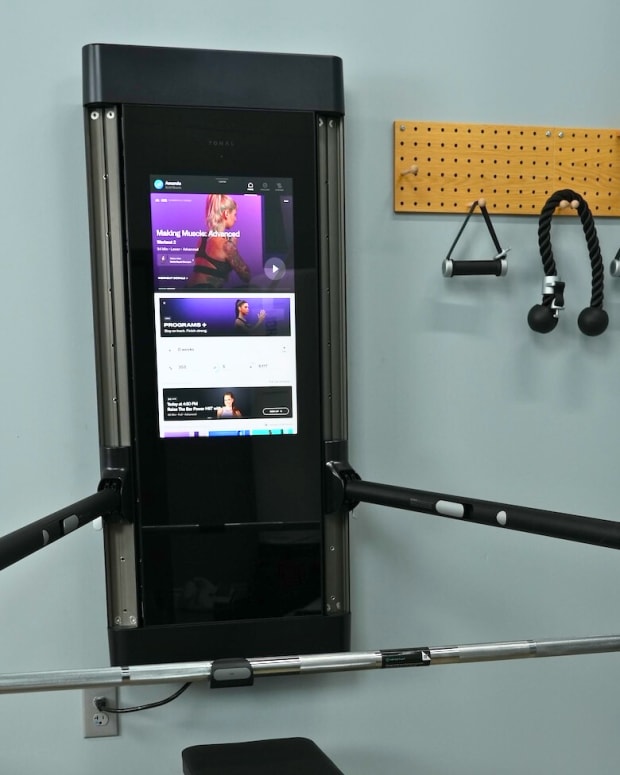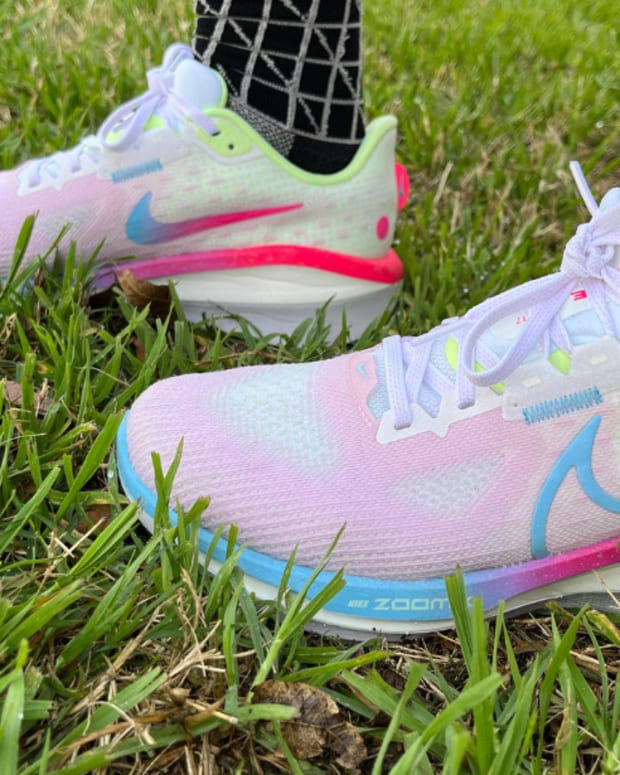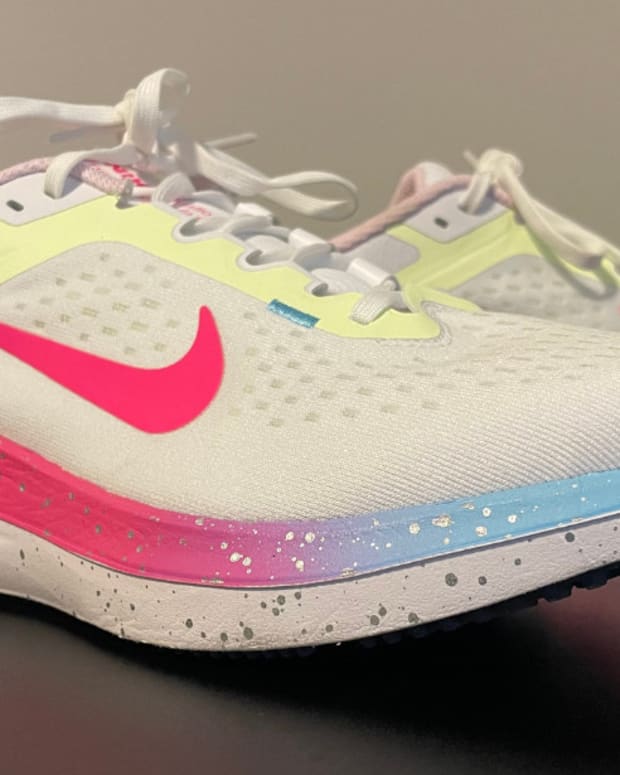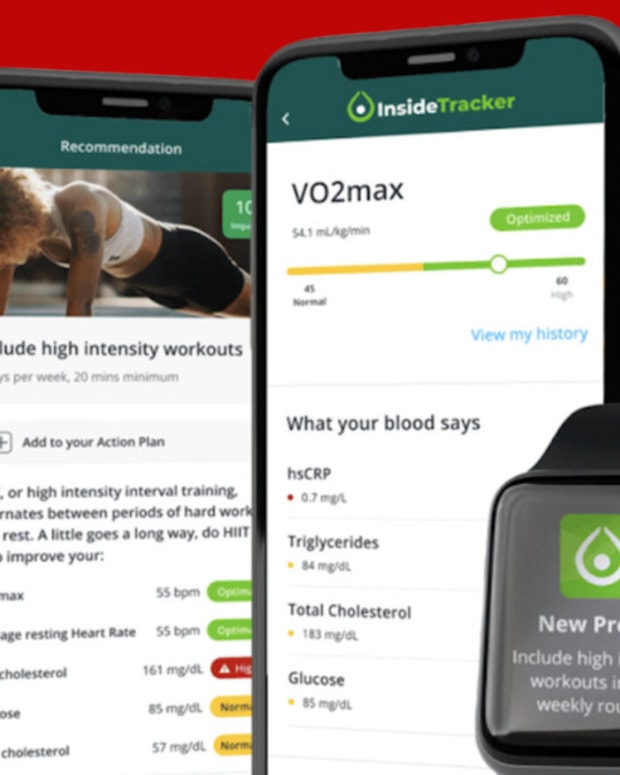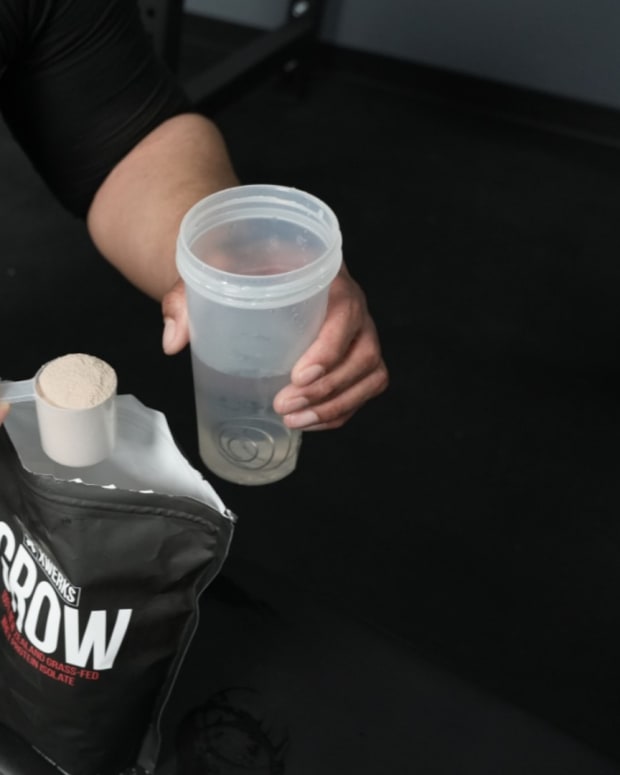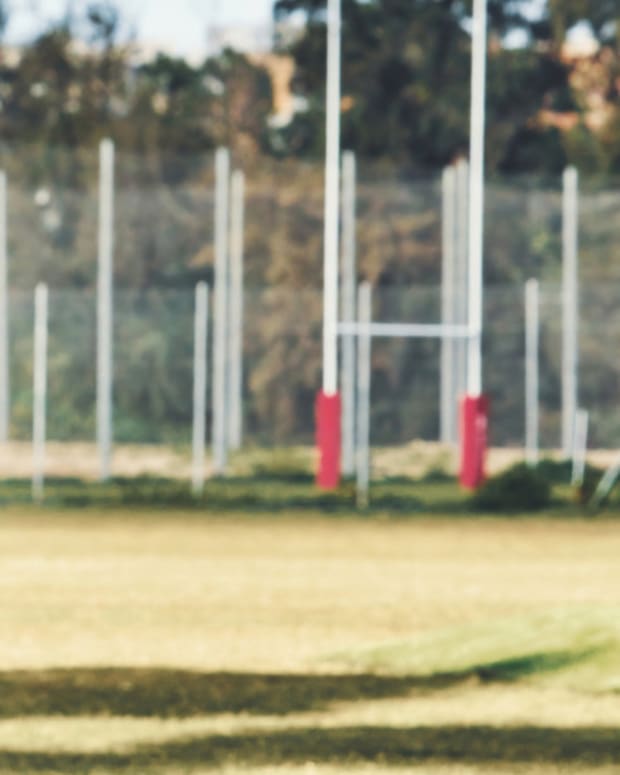The products featured in this article have been independently reviewed. When you buy something through the retail links on this page, we may earn commission at no cost to you, the reader. Sports Illustrated editorial staff are not involved in the creation of this content. Learn more here.
When building out a home gym, you may immediately lean toward a treadmill or an elliptical, but exercise balls, like Bosu balls, are a highly versatile (and often underrated) piece of gym equipment. Bosu balls create an unstable surface that forces you to fully engage muscles that you wouldn’t otherwise work as hard. Because of this, they can help aid in your training and take your workout up a notch.
On a foundational level, most Bosu balls are pretty similar. The majority of them have a half-dome bubble attached to a flat base. But there are different sizes and materials to consider. Some Bosu balls are designed for lighter home use only, while others can take the beating of regular gym workouts.
In this article, we’ll highlight some of the best Bosu balls, and provide you with an in-depth guide on how to choose the right one for you. We’ll also get you started with a few basic Bosu ball workouts.
Our Picks for the Best Bosu Balls:
- Bosu NexGen Pro
- Bosu Balance Trainer
- Bosu Pods
- CALIA Balance Ball
- Bosu Ballast Ball
- Bosu Elite
- Bosu Pro Balance Trainer
- Bosu Pro Multi Functional Ball
- Bosu Sport
- LifePro Exercise Ball
- ATIVAFIT Balance Ball
Bosu NexGen Pro
Key Features:
- Weight capacity: 300 pounds
- Dimensions: 25.6-inch diameter, 10-inch height
- Key features: Textured quadrants, latex-free, rubberized feet
The Bosu NexGen Pro is an excellent pick for all fitness levels. It has a textured dome that’s split into four quadrants to help with body positioning and grip. There are six rubberized feet on the flat side to help prevent slipping, and the dome is burst-resistant to support up to 300 pounds. For beginners new to the Bosu ball, it includes a downloadable wall chart with 12 exercises to get you started and a downloadable workout DVD.
Pros:
- Quadrant design to improve grip
- Anti-slip rubber feet
- Burst-resistant
Cons:
- Short warranty
Bosu Balance Trainer
Key Features:
- Weight capacity: 300 pounds
- Dimensions: 25.6-inch diameter, 10-inch height
- Key features: Textured dome, burst-free latex rubber, rubberized feet
The Bosu Balance Trainer is the original Bosu ball. The brand says it’s designed for the casual home user (so it likely won't stand up to heavy use in a gym setting) and is ideal for balance training, cardio, core work and full-body workouts. It has a textured, anti-burst dome that’s made of latex-free rubber and is designed to hold up to 300 pounds. There are six rubberized feet on the flat side to prevent slippage. It comes with a hand pump, wall chart and two downloadable Bosu ball workouts.
Pros:
- Anti-burst dome
- Rubberized, anti-slip feet
- Comes with wall chart and downloadable workouts
Cons:
- Not for gym use
Bosu Pods
Key Features:
- Weight capacity: 300 pounds
- Dimensions: 6.5-inch diameter
- Key features: Smaller diameter, raised rings, textured flat side
The Bosu Pods are designed to be used in conjunction with a regular Bosu ball. They’re much smaller, so you can grip them with each hand or position your feet in the center for push-ups, planks and/or other balance exercises. Each one is 6.5 inches in diameter compared to the 25.6-inch diameter of the full-size Bosu balls. They have raised rings on the domed side to improve comfort and grip and a textured surface on the flat side to prevent slipping. You can purchase them in packs of two, four or 12.
Pros:
- Complement regular Bosu balls
- Come in various quantity packs
- Textured bottom to prevent slipping
Cons:
- Best when used with full-size Bosu balls
CALIA Balance Ball
Key Features:
- Weight capacity: Not listed
- Dimensions: Not listed
- Key features: Textured dome, curved bottom, soft rubber flat side
The CALIA Balance Ball, which has a unique design, is made for home workouts and studio classes. Instead of being completely flat on one side, it has a slightly curved bottom that adds to the instability and challenge of using the ball. Because of this, it’s best for intermediate to advanced users. There are polka-dotted grips on the domed side and a non-slip flat surface with six rubber feet to keep it in place during your workout routine. The flat side is also made of a softer rubber that’s easier on the hands when using it as a wobble board for stability workouts. It comes with a pump.
Pros:
- Polka-dotted grips
- Soft rubber on flatter side
- Curved bottom adds to the challenge
Cons:
- Best for intermediate to advanced users
Bosu Ballast Ball
Key Features:
- Weight capacity: 300 pounds
- Dimensions: 21.7- to 25.6-inch diameter, depending on inflation
- Key features: Textured surface, six-sided design, inflates with compressor
The Bosu Ballast Ball is different from other Bosu balls. Instead of a half-dome design, it’s completely round, making it more like a stability ball than a balance board. It has a six-sided surface, with raised rings on each side to help with grip, positioning and alignment. This Bosu ball is best for dynamic drills and progressive exercises that are difficult to execute on a half-exercise ball. It doesn’t come with a pump, so you’ll need an air compressor or needle nose pump to inflate it.
Pros:
- Can be used as a stability ball
- Effective for dynamic drills
- Raised rings to help with positioning and grip
Cons:
- Doesn’t come with an air pump
Bosu Elite
Key Features:
- Weight capacity: 450 pounds
- Dimensions: 26-inch diameter, 8.5-inch height
- Key features: Textured surfaced, reinforced center, higher weight limit
The Bosu Elite is a high-density balance trainer that’s made for more advanced and/or heavier users. The dome is shorter than other Bosu balls, and is designed to target harder-to-reach areas like the adductors (muscle groups in your inner thighs). The shorter dome also generates more responsive power than the other Bosu balls, so the brand says it’s a better strength training tool. This Bosu ball has a textured surface and reinforced center, which gives it a higher weight limit—450 pounds compared to the 300 of other models. It’s also backed by a longer two-year warranty.
Pros:
- Higher weight limit
- Reinforced center
- Shorter dome for more explosive movements
Cons:
- Expensive
Bosu Pro Balance Trainer
Key Features:
- Weight capacity: 350 pounds
- Dimensions: 25.6-inch diameter, 10-inch height
- Key features: Raised ridges, anti-slip bottom, dual-molded dome
If you want a Bosu ball that can go from home gym to commercial gym, the Bosu Pro is made specifically for that purpose. The platform is over-molded to increase stability, while the dome is made of latex-free, burst-resistant material. All in all, this means this Bosu ball is durable enough to hold up against regular gym use, but still user-friendly for beginners. It’s the same size as some of the other brand’s balls, but it also has a slightly higher weight capacity to increase its durability.
Pros:
- Higher weight capacity
- Raised ridges for better grip
- Over-molded platform
Cons:
- Warranty doesn’t cover commercial use
Bosu Pro Multi Functional Ball
Key Features:
- Weight capacity: 350 pounds
- Dimensions: 26-inch diameter, 10-inch height
- Key features: Raised ridges, fully rubberized bottom, foot pump
The Bosu Pro is designed for commercial use, which is really a fancy way of saying that it’s built to withstand more repeated use. It has a latex-free dome that’s resistant to bursting, and made of a highly durable rubber that can support up to 350 pounds. Raised ridges around the dome help with stability and limb placement. One of the biggest differences between this model and the others is the base. This one has a fully rubberized bottom to make it truly anti-slip, while the others have rubber feet only. This version also includes a foot pump, which makes it easier to inflate.
Pros:
- Designed for commercial use
- Higher weight limit
- Fully rubberized base
Cons:
- Expensive
Bosu Sport
Key Features:
- Weight capacity: 250 pounds
- Dimensions: 23-inch diameter, 3.9-inch height
- Key features: Smaller design, rubber feet, raised ridges for grip
The Bosu Sport is a smaller version of the original Bosu ball. It has a similar design, with a non-latex dome with raised ridges that help with grip and alignment. The flat bottom isn’t textured like some of the other picks, but it does have rubber feet that help keep it securely in place. It weighs 10 pounds (the original Bosu balls weigh 13) and has handles on the bottom to help make it more portable. Bosu recommends this ball for travel and/or outdoor workouts. It’s worth noting that the weight limit is lower, too. The Bosu Sport supports up to 250 pounds, while other versions from the brand support up to 300.
Pros:
- More portable
- Raised ridges for grip
- Anti-slip bottom
Cons:
- Lower weight limit
LifePro Exercise Ball
Key Features:
- Weight capacity: 440 pounds
- Dimensions: 23.6-inch diameter, four-inch height
- Key features: Textured surface, handles
If you’re looking for durability, the LifePro Exercise Ball is the choice for you. This balance ball is made from a combination of highly durable rubbers that can support up to 440 pounds. The entire surface is textured, with extra grip patterns that help with alignment. The flat side is also textured to keep the Bosu ball firmly in place throughout your entire workout sequence. There are two handles on each side of the ball to make it easier to transport or move around the room.
Pros:
- Highly durable
- Fully textured surface
- Handles for easier transport
Cons:
- Amazon reviewers say it’s difficult to inflate
ATIVAFIT Balance Ball
Key Features:
- Weight capacity: 660 pounds
- Dimensions: 23.4-inch diameter, 4.1-inch height
- Key features: Textured dome, anti-slip rubber feet, two resistance bands
The ATIVAFIT Balance Ball is designed for beginners, but can be used by people of all fitness levels. It’s made of non-toxic PVC and has a textured, patterned surface on the entirety of the dome. This helps with grip and footing during a variety of exercises, including squats, crunches, lunges, push-ups and planks. The flat side of the ball also has an anti-slip textured surface that keeps you secure even when your hands get sweaty, as well as six rubber feet that plant it in place. This balance ball comes with a pump and includes two resistance bands that attach to the sides of the base so you can engage your upper body while you’re doing your balance training. At 660 pounds, it also has one of the highest weight limits in the category.
Pros:
- Very high weight limit
- Comes with resistance bands
- Fully textured for grip
Cons:
- Diameter is smaller than other Bosu balls
What Is a Bosu Ball?
A Bosu ball is a piece of equipment that’s used for balance training. It creates an unstable surface that engages stabilizing muscles, like your core, and takes the effort of your workout up a notch. Bosu balls are often used for physical therapy, too.
Bosu balls look like a stability ball that’s been cut in half, with one flat side and one domed side. The domed side is typically made of a thick non-latex rubber that you can inflate or deflate to control the feel. You can use both sides during your workouts, which is how the Bosu ball got its name. There are several brands of these half ball balance trainers on the market now, but Bosu is a brand name and the original that was developed in 1999. Bosu is an acronym that originally stood for “both sides up.” Over the years, that acronym has changed, and now the inventors of the half ball balance trainer prefer to use “both sides utilized.”
How to Use a Bosu Ball
Bosu balls are extremely versatile. You can use them for strength training or as a way to improve balance. If you want a specialized routine, you may want to work with a personal trainer who can develop a sequence that’s specific to your fitness goals. But here are some Bosu ball exercises you can work into your routine right now, whether you’re a beginner or a balance trainer pro.
Push-Ups
Bosu balls can add an extra element of balance to a standard push-up. This works the upper body, while also improving core strength.
- Step 1: Put the Bosu ball domed side down, and start in a high plank position with your hands on the flat side.
- Step 2: Bend your elbows, bringing your chest down to the Bosu ball. Extend your elbows to return to the plank position.
- Step 3: Repeat for 30 seconds, doing as many reps as possible.
Side Plank
The side plank is a core strengthening exercise. It can help strengthen your obliques, improve your balance and correct your posture.
- Step 1: Lie on one side with your legs stacked on top of each other and extended straight out. (You can put a yoga mat down if you’d prefer not to lie on the floor.)
- Step 2: Rest your forearm in the center of the domed portion of the Bosu ball.
- Step 3: Lift your hips straight up, until your body forms a straight line from your head to your toes.
- Step 4: Raise your opposite arm (the one that’s not anchoring you on the Bosu ball) toward the ceiling. For an extra challenge, raise your top leg, and add an ankle weight for a next-level burn.
- Step 5: Hold for 30 seconds, then repeat on the other side.
Squats
Squats can strengthen the muscles in your lower body, improve athletic performance and help prevent injury. Doing squats on an unstable surface, like a Bosu ball, engages your core muscles more since you’ll have to exert more effort maintaining your balance. Note: This exercise is best for those who have already perfected the regular squat and are looking to take their workout to the next level.
- Step 1: Place the Bosu ball on the floor with the flat side on the floor and the domed side up.
- Step 2: Stand on the domed side, centering yourself so you feel balanced.
- Step 3: Drive your hips back, bending your knees so they form a 90-degree angle.
- Step 4: Straighten back up and repeat, doing as many as you can in 30 seconds while maintaining proper form.
How We Chose the Best Bosu Balls
On the surface, Bosu balls look pretty similar. There aren’t a ton of differentiating features, so the decision really comes down to construction and durability. We made sure all the options on our list were made of high-quality, durable materials that could keep up with your regular workouts. We also considered ease of use, weight capacity and price range. Once we had a short list of options, we dug into customer reviews to make sure all the picks we recommended were highly rated without any major complaints.
How to Choose the Best Bosu Ball for You
When choosing a Bosu ball, consider construction, durability, size and weight capacity. You’ll also want to factor in price to make sure it fits within your budget.
Construction
Most Bosu balls are made with thick, non-latex rubber. The material can vary, but heavy-duty polyvinyl chloride (PVC) and vinyl are common choices. The rubber dome is attached to a rubber or plastic base, with a rubber bottom and/or feet to provide an anti-slip surface.
When choosing a Bosu ball, dig into the specific materials used to make sure they work for you. If you have latex allergies, be extra careful to choose a non-latex option.
Durability
Bosu balls can take a beating, so you’ll want to make sure the one you choose is durable. This means digging into the materials—a heavy-duty rubber is best—and the weight limit. A higher weight limit makes it more likely that the ball can handle regular use without breaking down. You’ll also want to look for buzzwords like “anti-burst,” which means the rubber has been tested against the weight limit and different exercises to ensure that it won’t pop from regular use.
Size
Bosu balls come in different sizes. You’ll find different diameters and heights, each of which can be used to support your workout in varying ways. The size of the Bosu ball makes a difference in which types of workouts you can do. For example, you can stand on a full-size Bosu ball, and also use it to support your hands during planks or push-ups. You can’t stand on small Bosu balls, but they can be used to add instability to push-ups or triceps dips. You can also use them to deepen stretches or during Pilates or yoga sequences. When choosing a Bosu ball, decide how you want to use it, and choose a size based on that.
Weight capacity
Since you’ll be putting most of your weight on a Bosu ball, you’ll want to make sure the one you choose can properly support you. Most are made with an anti-burst, non-latex material that can support around 300 to 350 pounds, but some have a much higher weight capacity than that. Double check the weight capacity before deciding on one.
Price
When choosing a Bosu ball, make sure it fits into your budget. The brand name balls are often more expensive than off-brand Bosu ball alternatives, but that doesn’t automatically mean they’re better. Consider value here, too. Instead of choosing the least expensive option, you may want to find a good quality option that costs a little more, but is made of more durable material and backed by a longer warranty.
Warranty
Bosu balls are made with thick, high-quality material that’s designed to resist bursting. But things happen, and if you find yourself in a position where you need to take advantage of the warranty, you’ll want to make sure it’s a good one. Brand name Bosu balls are typically covered by a one-year warranty, which is about average for the category. Make sure the ball you choose has similar coverage—or at least coverage you feel comfortable with. Dig into the fine print, too, to make sure you’re aligned with the type of coverage being offered.
Bosu Ball FAQs
How many times per week should you use a Bosu ball?
You can add a Bosu ball to your weekly workout routine however you’d like. If you’re an older adult at risk of falling, the American Heart Association recommends doing balance training three or more days a week. Make sure you talk to your doctor and get clearance to use the Bosu ball before adding it to your workout routine.
Are you able to use your whole body using a Bosu ball?
Yes, you can work your whole body using a Bosu ball. Depending on where you put the ball and which exercises you do, you can work your core muscles plus muscle groups in your upper body and lower body.
Which side of a Bosu ball should you stand on?
While you can use both sides of a Bosu ball for various balance exercises, the brand recommends standing only on the dome side and not the flat side. This gives you the biggest balance challenge with the lowest risk of injury.
Final Thoughts
Bosu balls add an element of instability to your workout that can make it more challenging and ultimately get you better results. They look really similar on the surface, but there are lots of differences to consider, like durability, weight limit and type of textured design. When choosing a Bosu ball, think about how you want to use it. If you’re planning to use it casually, a basic model will work. If you want to incorporate balance exercises regularly, you may want to upgrade to a commercial version that can withstand repeated use.
Prices are accurate and items in stock as of publish time.












